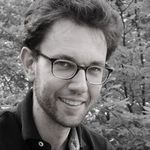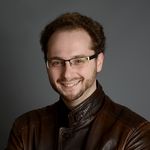Surfaces are a very interesting test case to study diffeomorphism and homeomorphism groups of dimension bigger than 1, where many more tools are available.
The study of surface symmetries naturally breaks into two parts:
\[ 1 \to \mathrm{Homeo}_0(S) \to \mathrm{Homeo}^+(S) \to \mathrm{Mcg}(S) \to 1, \]
where Homeo0(S) is a transformation group, and Mcg(S) is the mapping class group. These two groups have very different flavor:
- Mapping class groups are finitely generated, and thus can be studied using geometric group theory. Their algebra and geometry is by now fairly well understood: they are residually finite, hierarchically hyperbolic, algebraically and quasi-isometrically rigid, and much more.
- The group Homeo0(S) of isotopically trivial homeomorphisms is non-discrete, and are thus not accessible to (classical) geometric group theory. They are usually studied using geometric topology, and are generally much more mysterious.
They are algebraically simple, but almost nothing is known about their finitely generated subgroups, or their geometry (in the sense of Mann-Rosendal).
The underlying philosophy of this project is the transfer of methods which are successful for mapping class groups to the realm of homeomorphism groups, allowingto study the latter with geometric tools.
Our central goals can be grouped in the following subprojects:
- Lattices in homeomorphism groups, and elliptic or parabolic isometries of the Bowden-Hensel-Webb curve graph \(\mathcal{C}^\dagger(S)\)
- Stable Commutator Length and Hyperbolic Isometries of \(\mathcal{C}^\dagger(S)\)
- Large Scale Geometry of homeomorphism groups
- Nielsen Realisation Questions and mapping class group actions on \(\mathcal{C}^\dagger(S)\).
- Extension problems for diffeomorphism groups and Automorphisms of \(\mathcal{C}^\dagger(S)\).
Publications
The fine curve graph was introduced as a geometric tool to study the homeomorphisms of surfaces. In this paper we study the Gromov boundary of this space and the local topology near points associated with minimal measurable foliations. We then give several applications including finding explicit elements with positive stable commutator length, and proving a Tits alternative for subgroups of the homemorphism group of a closed surface containing a pseudo-Anosov map, generalizing a result of Hurtado-Xue.
Related project(s):
38Geometry of surface homeomorphism groups
Every finite collection of oriented closed geodesics in the modular surface has a canonically associated link in its unit tangent bundle coming from the periodic orbits of the geodesic flow. We study the volume of the associated link complement with respect to its unique complete hyperbolic metric. We provide the first lower volume bound that is linear in terms of the number of distinct exponents in the code words corresponding to the collection of closed geodesics.
Related project(s):
38Geometry of surface homeomorphism groups
In the 1970s, Williams developed an algorithm that has been used to construct modular links. We introduce the notion of bunches to provide a more efficient algorithm for constructing modular links in the Lorenz template. Using the bunch perspective, we construct parent manifolds for modular link complements and provide the first upper volume bound that is independent of word exponents and quadratic in the braid index. We find families of modular knot complements with upper volume bounds that are linear in the braid index. A classification of modular link complements based on the relative magnitudes of word exponents is also presented.
Related project(s):
38Geometry of surface homeomorphism groups
very oriented closed geodesic on the modular surface has a canonically associated knot in its unit tangent bundle coming from the periodic orbit of the geodesic flow. We study the volume of the associated knot complement with respect to its unique complete hyperbolic metric. We show that there exist sequences of closed geodesics for which this volume is bounded linearly in terms of the period of the geodesic's continued fraction expansion. Consequently, we give a volume's upper bound for some sequences of Lorenz knots complements, linearly in terms of the corresponding braid index. Also, for any punctured hyperbolic surface we give volume's bounds for the canonical lift complement relative to some sequences of sets of closed geodesics in terms of the geodesics length.
| Journal | J. Knot Theory and its Ramifications |
| Link to preprint version | |
| Link to published version |
Related project(s):
38Geometry of surface homeomorphism groups
We construct a sequence of geodesics on the modular surface such that the complement of the canonical lifts to the unit tangent bundle are arithmetic 3-manifolds.
Related project(s):
38Geometry of surface homeomorphism groups
Building on work of Bowden-Hensel-Webb, we study the action of the homeomorphism group of a surface $S$ on the fine curve graph $\mathcal{C}^\dagger(S)$. While the definition of $\mathcal{C}^\dagger(S)$ parallels the classical curve graph for mapping class groups, we show that the dynamics of the action of $\mathrm{Homeo}(S)$ on $\mathcal{C}^\dagger(S)$ is much richer: homeomorphisms induce parabolic isometries in addition to elliptics and hyperbolics, and all positive reals are realized as asymptotic translation lengths.
When the surface $S$ is a torus, we relate the dynamics of the action of a homeomorphism on $\mathcal{C}^\dagger(S)$ to the dynamics of its action on the torus via the classical theory of {\em rotation sets}. We characterize homeomorphisms acting hyperbolically, show asymptotic translation length provides a lower bound for the area of the rotation set, and, while no characterisation purely in terms of rotation sets is possible, we give sufficient conditions for elements to be elliptic or parabolic.
| Journal | Adv. Math |
| Volume | 408 Part B |
| Link to preprint version | |
| Link to published version |
Related project(s):
38Geometry of surface homeomorphism groups
We show that the identity component of the group of diffeomorphisms of a closed oriented surface of positive genus admits many unbounded quasi-morphisms. As a corollary, we also deduce that this group is not uniformly perfect and its fragmentation norm is unbounded, answering a question of Burago--Ivanov--Polterovich. As a key tool we construct a hyperbolic graph on which these groups act, which is the analog of the curve graph for the mapping class group.
| Journal | J. Amer. Math. Soc. |
| Volume | 35 |
| Pages | 211-231 |
| Link to preprint version |
Related project(s):
38Geometry of surface homeomorphism groups
Team Members
Ph Dr. Jonathan Bowden
Project leader
Universität Regensburg
jonathan.bowden(at)mathematik.uni-regensburg.de
Prof. Dr. Sebastian Hensel
Project leader
hensel(at)math.lmu.de
Dr. José Andrés Rodríguez Migueles
Researcher
Ludwig-Maximilians-Universität München
joe_serdn(at)ciencias.unam.mx



